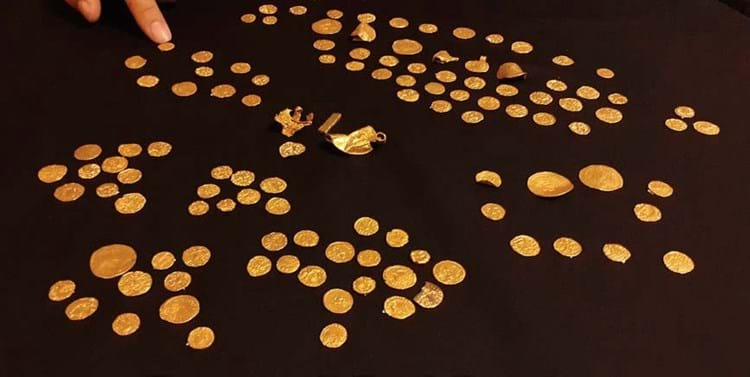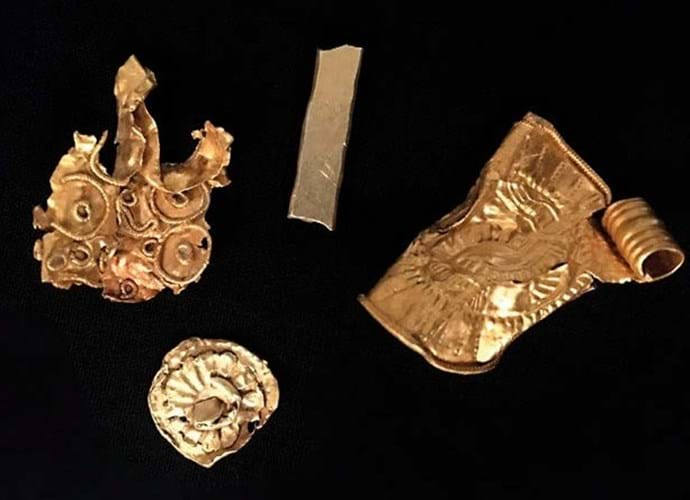
A total of 131 gold coins and four other gold items were discovered by two metal detectorists in west Norfolk between 2014-20.
The hoard would have been buried shortly after 600AD. It comprises 131 gold coins (mostly Frankish tremisses plus nine gold solidi from the Byzantine empire). It also includes four gold objects: a gold bracteate pendant, a small gold bar and two pieces that were part of larger jewellery items (pictured).
Norwich Castle Museum hopes to acquire the hoard, with the support of the British Museum.

Among the Norfolk hoard 131 were four gold objects: a gold bracteate pendant, a small gold bar and two pieces that were part of larger jewellery items.
The ultimate value will be determined by the Treasure Valuation Committee.
According to experts the group could be worth around £300,000. Nigel Mills, consultant in artefacts and antiquities at Dix Noonan Webb, said he would value the hoard at around £250,000-£300,000 on the basis the gold artefacts could be worth £15,000-25,000 each, the tremisses £1200-£2500 each and the solidi £350 each. He added: “If they were sold on the open market with this provenance they would sell well.”
Complex treasure case
Most treasure cases are relatively straightforward but this was unusual due to how the coins were found: by two individuals over many years.
The HM coroner for Norfolk held a two-month long inquest process gathering evidence on the case.
The majority of the objects were found between 2014-20 by a single detectorist who reported his finds to the appropriate authorities. However, 10 of the coins were found by David Cockle (at the time a serving policeman), who had permission from the landowner but who failed to report his discovery and tried to sell his coins.
Policeman sentenced
His deception was uncovered and in 2017 he was found guilty of theft and sentenced to 16 months in prison (and dismissed from the police). Two coins sold by Cockle have not been traced while a single gold coin found in the same field it in 1990 was not covered by the Treasure Act.
The previous largest coin hoard of this Anglo Saxon period was a purse containing 101 coins discovered at Crondall in Hampshire in 1828.
A similar array of Frankish coins was found in the purse at the Sutton Hoo ship burial in Suffolk.
Gareth Williams, curator of early medieval coins at the British Museum, said: “This is a hugely important find. It is close in date to Sutton Hoo and although it doesn’t contain as much gold as the whole of the Sutton Hoo burial, it contains many more coins.
“In fact, it is the largest coin hoard of the period known to date. It must be seen alongside other recent finds from East Anglia and elsewhere and will help to transform our understanding of the economy of early Anglo-Saxon England.”
The Treasure Act came into law in 1996 and The British Museum’s Portable Antiquities Scheme (PAS) was set up in 1997 so that archaeological objects found by the public can be voluntarily recorded.
Unless an object is defined as Treasure, finders have no legal obligation to report them, but many do so voluntarily.
Finds considered Treasure become property of the Crown but the finder and landowner are entitled to receive a reward equivalent to the full market value of the find.
The government is in the process of changing the official definition of treasure to cover other rare and precious archaeological finds, not just those that are more than 300 years old and made of gold or silver or precious metal, as the current law states.














